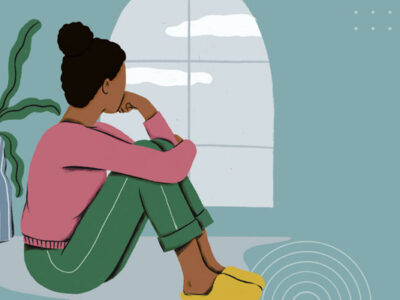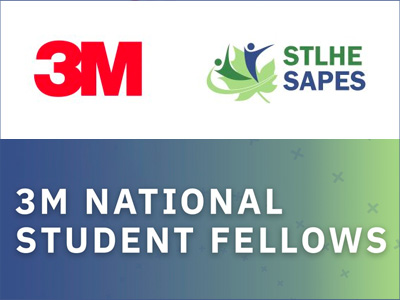The Teach-Ins hosted by the Critical and Interdisciplinary Studies Department has created opportunities for stakeholders across the University of Windsor to come together in community; a community of information and inspiration. On January 29, 2024, I was happy to attend, not just as an observer or participant, but as someone with lived experience navigating mental illness. In listening to the information and experiences shared by Dr. Renee Bliss, from the department of Psychology, Matt Davis, from the Windsor Police, and Renaldo Agostino, a Windsor City Councillor, I reflected upon my position as a Learning Specialist, teacher, researcher, and social worker – and I kept coming back to the title of the session and the context of mental illness in higher education. How does higher education “other” mental illness? And more importantly, what are we doing to create space and community for those who are another way?
A Brief History of Higher Education
Universities across what is now known as North America have their origins in religious entities through which White and Eurocentric information has been (and often continues to be) privileged (Verma, 2022). As Human Rights movements have challenged the systemic oppression and exclusion of equity seeking groups, such as the Black Power Movement, Women’s Rights, and Gay Rights Movement, inclusion in higher education has often meant on the margins (Henry & Tator, 2009).
Read more about the history of colonization and its impact to universities here: Colonization and Slavery –A Short History of Colleges and Universities – Centre for Innovation in Campus Mental Health
Aspiring to Make Change
There is palpable energy when reading the University of Windsor’s Strategic Plan, Aspire, to work towards the goals of decolonization, Indigenization, addressing embedded anti-Black racism, with focuses on inclusion, social justice, and equity. Yet the concept of accessibility—specifically, who is included, and can access and succeed—is problematic considering academic ableism.
Academic Ableism
Academic ableism is defined by Dolmage (2017) as the requirement of students to be able-bodied and able-minded to succeed in higher education; thus, being “abled” is prioritized. When a student does not meet the norms of ability, they are required to overcome disability, or mental illness, through “accommodations” to succeed. Through obtaining of supports or accommodations, a student with mental illness must earn success in a different way.
And in turn, success is located on the margins. This success is built upon an individual’s ability to secure accommodations within a system designed to exclude.
Creating Space Through Community in the Classroom
Stakeholders across the university must be intentional in their acts of inclusion. These acts of inclusion are the deliberate holding of space for people by “seeing, acknowledging, and inviting underrepresented voices, bodies, and perspectives” (Jana & Baran, 2020, p. 155) to create community. Through the Teach-Ins, I have learned that in the creation of inclusive community, we have the opportunity create meaningful change. When equity, diversity, and inclusion are stated as goals or ways of being in classrooms and institutions of higher education, teachers are responsible for finding opportunities for action. These must be intentional actions to create space for those with mental illness – such as through the course site and design, the posting of the syllabus, or the initial welcome email.
Why is creating space for mental illness necessary: According to Statistics Canada, in 2022, 18% of individuals age 15 and over met the diagnostic criteria for mood, anxiety, or substance use disorder in the past 12 months (Mental disorders in Canada, 2022 (statcan.gc.ca)).
In a class of 100 students, at least 18 students are struggling with a mood, anxiety or substance use disorder. Students who are diagnosed with mental illness or struggling with mental health concerns may not seek accommodations or self-disclose.
How to Create Space…
Through Relationships: Whether through reciprocal relationships between teachers and students, or among student peers, individuals who experience marginalization through higher education may find themselves on the inside, supported by their community, when opportunities to create meaningful relationships are facilitated.
Ideas to build relationships:
- Show up early to class or stay late (and let students know you are flexible).
- Bring in snacks, such as fruit or granola bars, as students may not have time to eat between classes.
- Ask students for their favourite songs and create a playlist to listen to before, during or after class.
- Ask students to share a story of success at the beginning of each class.
- Randomize students for group work and introduce team building exercises so they get to know each other.
Through Curriculum and Assessments: Review curriculum through the eyes of students; how are their experiences reflected back to them? What learning strategies are being used and are authentic opportunities offered to collectively promote social justice in education?
Ideas for curriculum and assessment:
- Whose ideas or knowledge is centred in your course? How is mental illness discussed?
- Employ various active teaching strategies to maximize students’ strengths to achieve success – Active Learning and Lesson Planning | Centre for Teaching and Learning (CTL) (uwindsor.ca), Facilitating Discussions | Centre for Teaching and Learning (CTL) (uwindsor.ca), Inquiry-Based Learning | Centre for Teaching and Learning (CTL) (uwindsor.ca).
- Use technology to engage students (e.g., YouTube, Interactive presentation software – Mentimeter).
- Offer flexibility in assessments (e.g., offer an option between a paper, presentation, recorded presentation or website).
- Offer flexibility in due dates (e.g., provide students an opportunity to negotiate due dates based upon competing demands).
Through Shifts in Language: What language is being utilized in the classroom? We often hear the word “crazy” to describe events that are unbelievable. Become more aware of the impact of language and “call in” students when language marginalizes those with mental illness.
Ideas for alternative language:

Through further education: Students navigate the intersectionality of oppression. When mental illness or disability is experienced in addition to other areas of oppression, such as genderism, classism, or racism (Crenshaw, 1990; Hill Collins, 2017) students’ complex identities may result in further marginalization. Engage in education, be aware of the supports available both on- and off-campus, and promote conversation in the classroom to support inclusivity.
Ideas for additional education:
- Engage in workshops available on campus: CTL Registration: Welcome (uwindsor.ca), Continuing Education at UWindsor
- University of Windsor – How to Find Help | Student Health, Counselling and Wellness (uwindsor.ca)
Final Thoughts
Mental illness impacts all of us; whether we have first-hand experience or know someone who navigates the world in a different way. Refusing to accept success on the margins is the first commitment in making change in higher education for individuals with mental illness. So, instead of doing things the same way as we have always done, let’s think about what we can do differently.
References
Crenshaw, K. (1990). Mapping the margins: Intersectionality, identity politics, and violence against women of colour. Stanford Law Review, 43(6), 1241-1299. https://www.jstor.org/stable/1229039
Dolmage, J. T. (2017). Academic ableism: Disability and higher education. University of Michigan Press. Academic Ableism: Disability and Higher Education on JSTOR
Henry, F., & Tator, C. (2009). Introduction: Racism in the Canadian university. In F. Henry & C. Tator (Eds.) Racism in the Canadian university: Demanding social justice, inclusion and equity. (pp. 22-60). University of Toronto Press. Racism in the Canadian university (uwindsor.ca)
Hill Collins, P. (2019). Intersectionality as Critical Social Theory. Duke Press. Chooser (crossref.org)
Jana, T., & Baran, M. (2020). Subtle acts of exclusion: How to understand, identify, and stop microaggressions.
Verma, A. (2022). Positioning anti-racism in higher education. In A. Verma (Ed.) Anti-racism in higher education: An action guide for change. (pp. 3-31). Policy Press. [Digitization request in progress]
Natalie Beltrano spent 15 years in child welfare before returning to higher education to obtain her Master of Social Work with a specialization in Leadership in Human Service Organizations from the University of Calgary. She entered the PhD program at the University of Windsor in the faculty of social work in 2019. Her dissertation research is focused on child welfare worker decision-making and the impact of anti-Black racism.
She is in the process of obtaining her University Teaching Certificate from the CTL and has worked as a Graduate Assistant over the last 3 years. She has had the privilege of facilitating lectures for the GATAcademy, and teaches as a sessional for the University of Windsor’s Master of Social Work Working Professionals and Durham College’s Social Service Worker programs. She is a fur-mum to a St. Berdoodle, Abby, and Labradoodle, Zoey, as well as a black cat named Dum Dum.










Comments